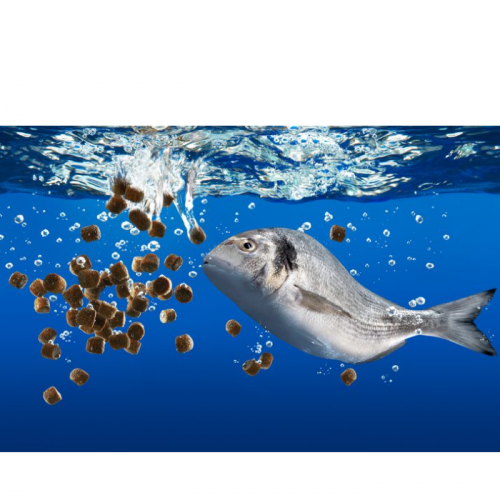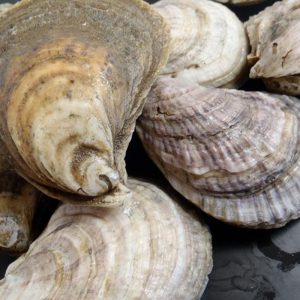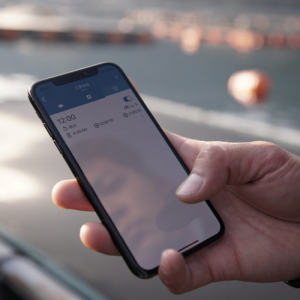
Aquaculture Feed Production Gets A New Look
| Wed, 30 Dec 2020 - 15:50
Algae-based products are becoming more and more prominent in the world of aquaculture feed.
As global seafood output is forced to increase due to rising global demand, aquaculture has been touted as the go-to solution to keep seafood supplies on track. Aquaculture, however, has in the past had an Achilles heel: Most conventional farmed species are carnivorous, and require fishmeal or fish-oil based feed to meet growth and nutrition targets.
The sources of fishmeal and fish-oil vary, from byproducts recycled at processing plants to forage fish such as menhaden or anchovies harvested in huge numbers. Typically, those sources are wild-caught, and thus limited in supply.
Also read: Unlocking New Potential for Microalgae in Aquafeed
For the past three years, events like the Future of Fish Feed Challenge (F3 Challenge) have highlighted that encroaching problem, and have offered prize money to companies that can make a sustainable, fish-free aquaculture feed that manages to meet the nutritional needs of aquaculture operations.
With increased demand for feed due to growth in global aquaculture production, the development of algae-based aquaculture feeds has accelerated, with many products now avilable commercially.
Algae-based feed companies like Veramaris have partnered with established, traditional feed manufacturers like Skretting to expand the penetration of algae-based products into mainstream markets – the partnership has already led to algal-oil fed trout being featured in French retailers, and Kaufland in Germany also now sells fish fed a diet from Vermaris’s algal oil.
Corbion is another company pioneering new algal-based feeds – AlgaPrime DHA – through partnerships with existing feed manufacturers like BioMar. As of October 2019, more than 500,000 tons of feed sold by BioMar included Corbion’s algae-based products.
Also read: Green Algae - Substitute Partial Pellet Feed for Tilapia
The increasing success of algae-based feeds is also reflected in the rapid evolution of the F3 Challenge, which has moved from a contest to encourage development of oil-based feed, to this year’s “Carnivore Edition,” which has split the contest into three separate categories – salmonids, shrimp, and other carnivorous species, awarding prizes of USD 70,000 (EUR 59,400) for the winner of each category.
Algae-based feed is no longer a conceptual, experimental feed. Veramaris, in feed trials with Hawaii-based mariculture company Ocean Era, has managed to replace traditional fishmeal-based aquaculture feed for algal-based feed in farm-raised kampachi, also known as Hawaiian yellowtail. According to the company, blind taste-tests indicated that fish weaned on the companies algal-oil based feed had a “more desirable taste compared to fish fed on a standard diet.”
“This is the first time – to our knowledge – that fishmeal and fish oil have been totally eliminated from the diet of a marine carnivorous fish, with no deleterious consequences,” Ocean Era CEO Neil Anthony Sims said. “Kampachi are a fast-growing, sashimi-grade fish, so this a significant breakthrough for the sustainability and scalability of marine fish farming.”
The rise of algal-based feed is resulting in a shift in how aquaculture feed gets the ingredients it includes. While pelletization of the feed still faces the same challenges as it always has – producing a feed that meets the correct buoyancy and nutritional standards in the right sizes – the earlier processes to produce the oil are radically different.
Also read: 'Charismatic Carbon'
That’s why companies like Corbion have invested in production facilities that are slightly different from a typical seafood-processing facility taking a wild-caught fish and creating an end product.
“AlgaPrime DHA is grown in closed fermentation tanks where it transforms renewable, sustainable plant sugars into algae containing omega-3 DHA rich oil,” Corbion Global Aquaculture Lead Chris Haacke said. “Our facility sits among sugar cane fields and is located next door to a sugar cane mill in the São Paulo state of Brazil, the major sugar cane production area in Brazil. Producing algae omega-3s via fermentation enables production at scale – Corbion’s facility has some of the largest aerobic fermentation tanks in the world and has been producing AlgaPrime DHA at scale for five years. This is a game-changer and allows Corbion to supply the volume necessary to support the growing aquaculture feed industry.”
The main ingredients of fermentation are simple: Some source of plant sugars, and an algae that is rich in omega-3s. Algae consume the sugars in the fermentation tanks, and produce the substances that can be refined into the commercially-usable product. It is at a basic level similar to the fermentation process that has been used for thousands of years – though typically it was used historically to brew beer or create wine.
Also read: Capturing Carbon for The Aquafeed Sector
The sugar source in this instance is locally-grown sugar cane, but other products can be used as well. Corbion chose the location, and sugar, for its sustainability.
“To safeguard our positive environmental and social impact, we work to ensure that our raw materials are sourced responsibly,” Haacke said. “Compared to other sugars’ sources like corn and wheat, the non-GM sugar cane used to grow AlgaPrime DHA is one of the world’s most productive sugar sources. Even the sugar cane waste is used as a renewable source of energy to power the sugar mill and our algae facility. All of this contributes to a low carbon-, water-, and land-use impact for producing AlgaPrime DHA.”
The end result of the fermentation process is a omega-3 rich powder, or a liquid form where the powder is mixed with vegetable oil.
“Both the powder and liquid formats can be incorporated into various feed formulations to help improve the nutritional and sustainability profile of farmed seafood,” Haacke said.
Also read: The Future of Fish Feed might be Fish-Free
Feed formulation is done alongside formulation partners, with extensive testing done to ensure the end product meets the feed formulator’s needs. Corbion’s objective is to use its R&D platform and robust production pipeline to create new feed solutions and meet the growing needs of the aquaculture industry.
“Any new feed ingredient requires extensive testing and applications development with our feed formulator partners,” Haacke said. “Corbion has specific applications expertise and works side-byside with our feed formulator partners to address issues of incorporation into the feed pellet to optimize for the right nutritional and functionality attributes. With any new feed ingredient, there are also logistics issues to address with additional storage tank capacity needs and rolling out adoption swiftly to feed production sites globally.”
Source: saefoodsource.com






















